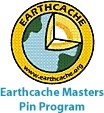
 This area is a State Park. All features are protected – collection or defacement of natural resources is prohibited.
This area is a State Park. All features are protected – collection or defacement of natural resources is prohibited.
Fremont Peak is a California State Park and requires a use fee. There are a few parking lots, campgrounds, and trails. It likely gets very busy on beautiful weekends and popular stargazing nights as it has its own observatory.
Fremont Peak is made up of marble and schist that was originally deposited as limestone and mudstone in a shallow sea 500 to 300 million years ago (See Fremont Peak Marble EarthCache for a description).
Barite is composed of barium sulfate (BaSO4). For a mineral that does not contain a metal, it is very heavy, one of just a few nonmetallic minerals with a specific gravity of four or higher. It is relatively soft, a Mohs hardness (2.5 to 3.5) and has three directions of right angle cleavage.
Four different modes of formation of barite in modern sediments:
- Authigenic -- crystallizes in the water column
- Diagenetic, diffusive – upward movement of water from anoxic sediments where sulfate reduction has released barium to pore water
- Diagenetic, advective – barium carried by movement of water expelled to the seafloor along faults or in seeps
- Hydrothermal – advection of hot water to the seafloor
Barium sulfate is extremely insoluble, thus seawater is typically close to saturation with respect to the mineral barite. Therefore, even the slightest increase in Ba ions leads to the precipitation of barite.
Barite is used as a filler in paper, cloth, and rubber to add weight to the product. Specific examples include playing cards and anti-sail mud flaps. It is used in drilling mud. It is also added to cement used to block X-ray and gamma-rays in hospitals. Barite is also used as a pigment.
The coordinates bring you to an old barite mine. High-grade barite is found in veins within the marble. Between 1916 and 1920, multiple mines were developed. Most of the barite was used as pigment in paint.
Logging requirements:
Send me a note with :
- The text "GC4TRQG Barite Deposits of Fremont Peak" on the first line
- The number of people in your group (put in the log as well).
- Using the pieces of rock on the ground, can you identify any barite?
- What direction does the vein go (compass direction)?
- What color paint was this barite used for?
- From the coordinates, how many other mines can you see?
The following sources were used to generate this cache:
- http://minerals.usgs.gov/minerals/pubs/commodity/barite/
- http://geology.com/minerals/barite.shtml
- http://www.sedimentaryores.net/Barite/Modern%20barite.html